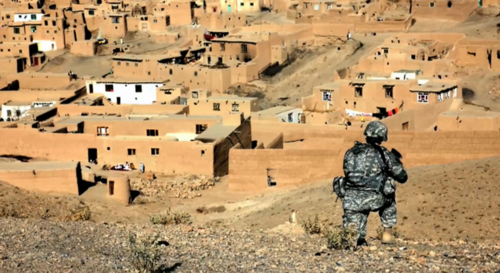[Editor’s Note: we were so taken last week by Tyler Ginter’s “Why We Fight” short that we decided to post another short video of his today. It’s a video entitled “What is Combat Camera,” and we asked LFM Contributor ‘Max Garuda’ to comment on it. ‘Max’ is a veteran of multiple UN-sponsored enforcement actions, and is an expert in the areas of new media and national security.]
“A well-focused Combat Cameraman can tip the scales in the battle for words, deeds and images. Combat Camera in most cases is the main effort.” -Maj. Matthew Yandura, 173rd ABCT Information Operations Officer
By Max Garuda. For a mini-doc/internal promotional piece, “What is Combat Camera” is great. Excellent production values, nicely edited, and showcasing some great photography. But since Ginter has distributed it via Vimeo to a wider viewership than its original, small, DOD (Department of Defense) – internal audience, it’s worth looking at for broader implications.
The most striking statement and image comes early in the piece. The narrator, Major Yandura, commends the combat cameraman, stating that “combat camera soldiers think differently, but more importantly they see the battlefield differently”. It’s this difference that makes them a force multiplier for unit commanders and grants them the basic toolkit to become effective strategic communicators.
 The most striking image in the entire 4 minute video punctuates Yandura’s compliment: a soldier in digital cammies rests on one knee in foreground, his back to the camera, facing a housing compound that fills the entire background of the photo. The contrast of the grey-clad soldier and the monochromatic tan compound is striking, and highlights how out-of-place the soldier seems. At the same time, this image shows a different battlefield than that which CNN or Al-Jazeera is likely to show. No menacing bearded and robe-clad Al-Qaeda fighters training with automatic weapons and RPGs; no running, shooting and chaos. Simplicity, calm and domesticity prevail, reminding us that there are everyday people trying to live their lives amidst the raging conflict around them.
The most striking image in the entire 4 minute video punctuates Yandura’s compliment: a soldier in digital cammies rests on one knee in foreground, his back to the camera, facing a housing compound that fills the entire background of the photo. The contrast of the grey-clad soldier and the monochromatic tan compound is striking, and highlights how out-of-place the soldier seems. At the same time, this image shows a different battlefield than that which CNN or Al-Jazeera is likely to show. No menacing bearded and robe-clad Al-Qaeda fighters training with automatic weapons and RPGs; no running, shooting and chaos. Simplicity, calm and domesticity prevail, reminding us that there are everyday people trying to live their lives amidst the raging conflict around them.
The piece goes on to address the problem that nags upper echelon leadership throughout NATO, DOD, US State Department and other institutions: the fact that the US and its allies are ‘losing the battle of narrative’ (as the saying goes in public diplomacy and strategic communication circles) in the ‘war for hearts and minds.’ Yandura notes that the US Army doesn’t “shape and frame the context of our own operations” very well, but one of the methods they employ is “using the imagery from the objective area to tell our own story.”
 One must remember here, though, that stories are a mutual production process engaged in by both author/producer and the viewer. There is no meaning without the steps of interpretation and comprehension on the part of the viewer. I don’t doubt Ginter and his colleagues are well aware of this, as he explains in the comments section below the Vimeo posting of this piece that the intended audience was other combat cameramen (as a morale boosting and showcasing piece) and DOD institutions (explaining what combat camera can do).
One must remember here, though, that stories are a mutual production process engaged in by both author/producer and the viewer. There is no meaning without the steps of interpretation and comprehension on the part of the viewer. I don’t doubt Ginter and his colleagues are well aware of this, as he explains in the comments section below the Vimeo posting of this piece that the intended audience was other combat cameramen (as a morale boosting and showcasing piece) and DOD institutions (explaining what combat camera can do).
It does raise the question, however, of what messages US strategic communication operations share and distribute within the contested populations of Iraq and Afghanistan (to that end, Ginter’s “Why We Fight” is an interesting contribution and I’d be very interested to know both its distribution plan and its reception in theater), not to mention those distributed at home. Yandura’s comment that our own operations are contextualized very well for the local populace applies to the domestic audience as well. What images has the public seen of the war, and how well has the government communicated with the public regarding the context of US operations?